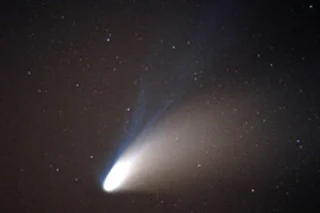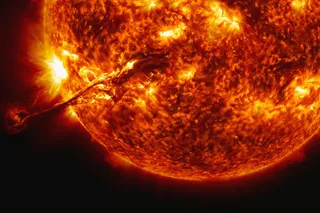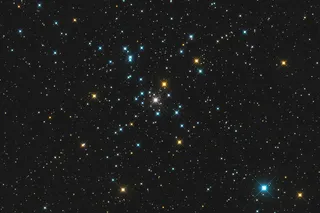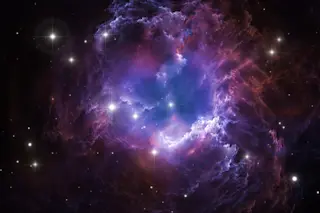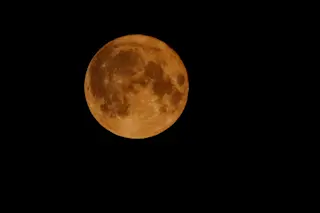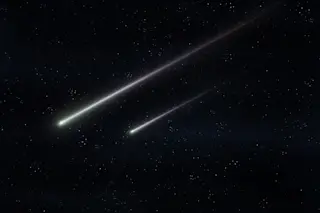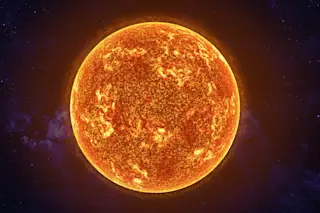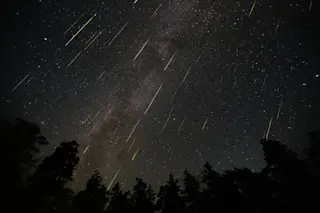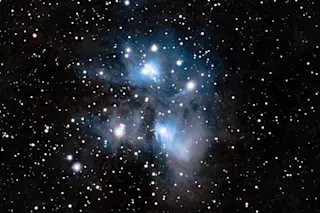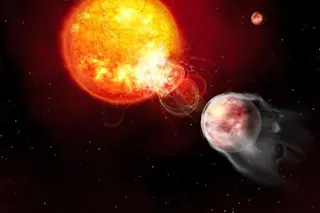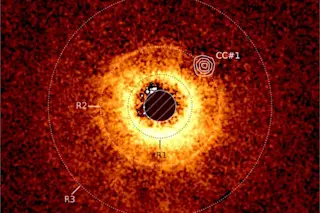When you saw the Hale-Bopp comet, you may have seen material from a distant star passing by. In a new study, a team of astronomers argues that most of the comets that streak through our solar system were actually born in other solar systems. Given their eccentric orbits and infrequent visits, comets seem like worthy candidates for an exotic origin. But the prevailing thinking said no, they are rather ordinary. Researchers thought most of the comets that pay us a visit initially formed from the sun's protoplanetary disk—the same swirling mass that formed our own planet—and came to reside in the weird Oort cloud region at the periphery of our solar system. From there, the gravitational bullying of larger bodies can dislodge a few like Halley's Comet or Hale-Bopp, which swerve into an orbit that sees them visit the inner solar system now and then. In a study in Science this week, researchers led by Harold Levison posit a different idea: Many of the comets hanging around our solar system are stolen. It goes like this:
Like most stars, the sun may very well have been created in a tightly nestled birth cluster, a stellar nursery with tens, hundreds or possibly even thousands of stars. During millions of years of intimate infancy, the newborn stars could have exchanged vast numbers of comets from the fringes of their disks, each of them winding up with an ensemble of hand-me-downs from their stellar siblings [Scientific American].
The idea arose because the Oort cloud
itself doesn't make sense under the long-standing interpretation of comet origins.
The researchers argue that the Oort cloud's 400 billion objects could not have all originated from within the solar system: There are about 70 times fewer objects there than needed to explain the Oort cloud's size. Therefore, the team argued, a large portion of the material that makes up the Oort cloud had to come from somewhere else [Los Angeles Times].
Levison's team found that this material "from somewhere else" could constitute as much as 90 percent of the Oort cloud. Other astronomers had proposed the same idea in decades past, but lacked the computing power to model such a scenario. As computing power marches ever upward, these models of the solar system
may prove more and more ideas to be possible: Just two days ago we reported on a separate team that finally had the computing power to model the formation of Saturn's tiny moons, showing that they could have formed from the planet's rings
. Then again, a model is just a model.
Julio Fernandez, an astronomer with the University of the Republic in Uruguay, said the study was interesting but relied on several assumptions. Among them: that the sun formed in a star cluster; that every star in such a cluster formed a planetary system with a comet swarm around it, just like ours; and that the sun was close enough to other stars in the cluster to be able to capture an entire comet cloud [Los Angeles Times].
Even the population of the cloud itself, which spurred this question of alien comets, is just an estimation. The Oort cloud is a hypothesized region that extends to the most distant extent of the sun's gravitational influence—maybe even halfway to the nearest foreign star. Guessing how many objects reside there isn't a shot in the dark, but it's no exact science, either. Related Content: DISCOVER: NASA Takes a Wild Comet Ride
80beats: Saturn's Rings May Have Birthed Its Small Moons—And More Could Be Coming
80beats: Comets Not So Likely To Smash Into Earth And Kill Us All
80beats: A Newly Discovered Comet Brings Tidings from the Oort Cloud
Image: Wikimedia Commons


